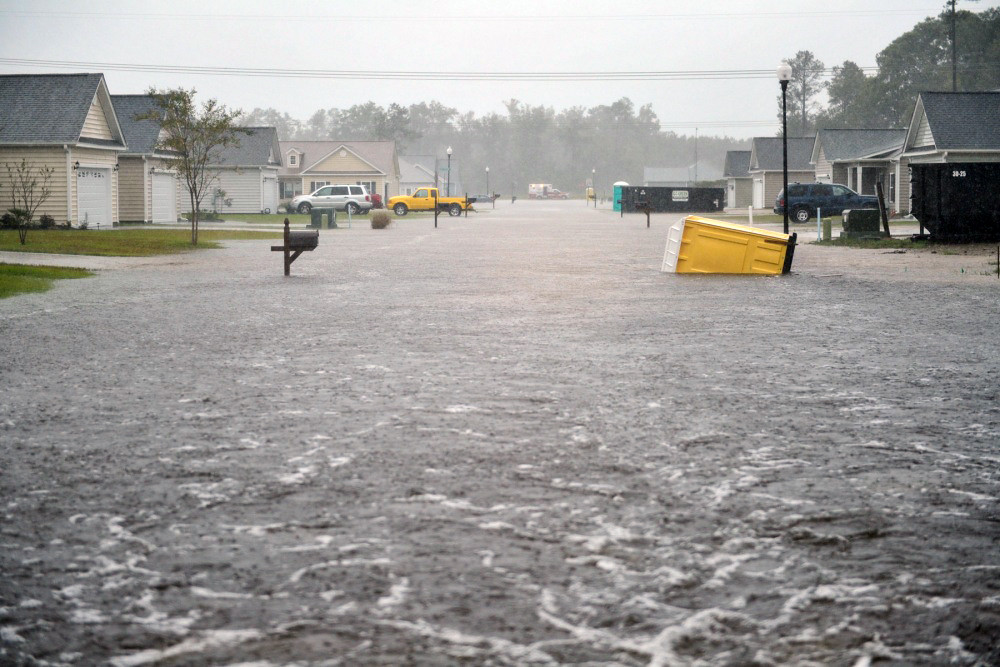We have much more to do and your continued support is needed now more than ever.
Three Policies Supporting Coastal Resilience

Efforts to protect and enhance our nation’s coastal resilience are, by their very nature, place-based. As coastal states and communities pursue strategies to adapt to a changing coastline, federal policy has an important role to play.
Recent years have brought waves of important policies, passed and proposed, that will increase the resilience of our Nation’s coasts and protect coastal communities. These include the Infrastructure Investment and Jobs Act (IIJA), Water Resources Development Act (WRDA), and programs created by Federal Emergency Management Agency (FEMA).
You’ve probably heard of the passing of IIJA, more commonly referred to as the bipartisan infrastructure deal, heralded as a once-in-a-generation investment in our nation’s infrastructure. But what does it do for our coastlines?
Investments in our coastlines
Infrastructure Investment and Jobs Act
To start, the act includes $492 million for NOAA National Coastal Resiliency Fund, a federal program established in 2018 that invests in largescale restoration and resilience projects that restore or expand natural infrastructure like wetlands and barrier islands — the National Wildlife Federation (NWF) enables similar projects through the Coastal Resilience Growth Fund.

Another $492 million goes toward NOAA coastal and inland flood inundation mapping, observations, and modeling that will aid in increasing our understanding of the impacts of climate change, and how to mitigate the foreseeable consequences. Lastly, $491 million will go to contracts, grants, and cooperative agreements through NOAA to provide funding and technical assistance for coastal restoration and construction projects that protect coastal communities from flooding and coastal storms. These investments, totaling nearly $1.5 billion, will greatly enhance our understanding of climate risk and the resilience of our coastlines.
Water Resources Development Act
Speaking of enhancing, Congress is currently working on the next iteration of WRDA legislation. Typically passed every two years, WRDA legislation provides direction to the U.S. Army Corps of Engineers (USACE), an agency with significant influence over our nation’s resilience to flooding and coastal storm events.

NWF is a thought leader on ways to improve USACE’s approach to project design and implementation, and we are pursuing important reforms in this current WRDA bill. For example, NWF is promoting resilience at the Corps through the establishment of a Resilience Directorate, which will be tasked with ensuring that existing programs, authorities, and operations take full advantage of natural infrastructure and adopt modern, comprehensive planning techniques.
NWF is also seeking to improve the Corp’s approach towards redressing environmental injustice, including increasing agency capacity and expertise on environmental justice issues, enhancing resiliency planning assistance for low-income communities, establishing an Environmental Justice Innovation Center with a focus on cost-effective solutions for water resources problems, and better incorporating toxic remediation into Corps projects.
These reforms build on the progress made by previous bills and are critical next steps in improving community and water resources resilience in addition to advancing solutions that will help redress environmental injustices.
Federal Emergency Management Agency
The Federal Emergency Management Authority is another key agency in the resilience space. In recent years, FEMA has increased its investment in pre-disaster mitigation via the creation of the Building Resilient Infrastructure and Communities (BRIC) program. This and other FEMA hazard mitigation programs remain an important source of potential resources to fund nature-based coastal resilience projects, but additional changes would help ensure that such projects are truly competitive for funding.
Under the BRIC program, NWF is working to ensure that the application process for nature-based solutions is not overly complex for applicants to navigate, and captures the full suite of ecosystem service benefits that nature-based solutions provide to communities. We are also exploring changes to set aside a minimum portion of program funding to support nature-based solutions, specifically enhancing nature-based risk reduction projects.
For addressing environmental injustices, NWF supports the establishment of a Disaster Equity Subcommittee within FEMA’s National Advisory Committee, which would advise the Administrator of FEMA on how to improve equitable program delivery related to disaster preparedness, response, recovery, and mitigation. NWF is also advocating for improvements to state hazard mitigations plan requirements to explicitly integrate robust climate change consideration in the risk and vulnerability section of all plans, and to require consideration in such plans of existing protective natural infrastructure assets and opportunities to build resilience using nature-based approaches.
NWF supports nature-based solutions across many domains, including forests, working lands, mined lands reclamation, and, notably, coastlines. Using these solutions on coastlines often has the dual benefit of increased carbon sequestration and resilience against sea-level rise and storms. These policies advance NWF’s philosophy of natural infrastructure remedies, which protect the social-ecological ecosystems of our coasts.
For more information about NWF’s role in advancing coastal resilience, check out the Coastal Resilience Growth Fund – https://www.nwf.org/CoastalResilience





















